- September 26, 2020
- Posted by: dev-admin-mike
- Categories: HRSP Partner Blog Post, Leadership

By Tara J Rethore, Guest Author
Weddings bring people together – by definition, really. There’s the couple joining their hearts and lives, the officiant who presides over the event, and the guests who witness it. All are present in service of a single, shared purpose: the marriage of two unique individuals, embarking on a journey to an agreed destination.
That sounds a lot like business.
A marriage has mission (shared purpose) and vision (agreed destination) and presumably, common values that underpin the union. These three are central to good strategy, too. In fact, it’s hard to argue that people are not at the core of most things we do in business. People are typically the target audience, or the user, or the buyer, or the advocate, or the beneficiary, or simply: the folks who get it done. They are at the heart of it all – just like at a wedding.
In our experience, you cannot execute strategy (let alone develop it) without people. And a healthy marriage between people and strategy can make the difference between effective or mediocre performance. Most agree that Human Resources (HR) needs a “seat at the executive table”; from there, they initiate the match between people and strategy. Yet, the long term success of the match benefits from ongoing intervention by HR. More than matchmaking, HR leaders also play an important role in building the organizational competencies, relationships, and behaviors that allow the match to thrive. For some, this may sound too basic or fundamental. In practice, however, it’s neither easy nor always well done.
Five lessons that HR can use to promote a healthy marriage of people and strategy:
- The wedding is just the beginning. Developing strategy – and taking that seat at the table – is certainly a critical first step. Done well, your strategy includes a destination and an initial set of priorities that set you on the path toward reaching it. HR can be particularly instrumental in helping the organization to identify the gaps between where you are today and where you want to be. And that shouldn’t happen solely at the executive level. HR Business Partners translate those into specific competencies or capabilities that are needed for success – in each part of the organization. Ask: What will it take?
- Traveling together requires adjustment. Every marriage has a few bumps; likewise, that’s often a hallmark of a strategic journey. Before you embark, get your bearings. Know precisely where you are and identify the signs that will mark your progress. Always, keep the destination in mind. That way, like a good GPS, HR can help the organization to ‘recalculate’, to navigate an alternate route to reach the destination (your vision). Ask: Where next?
- It takes work. Marriage is a lifelong adventure that can be wonderfully rewarding; but it’s not easy. It takes work. Likewise, executing strategy well requires specific, deliberate attention. Devote some time to it; literally, put it on the agenda on a periodic, yet regular basis. HR has more opportunity for impact when it frames the ‘people’ issues in the context of strategic challenges or solutions. Doing so credibly requires knowing the business, intimately. HR should be as well-versed in what the business does, how it actually works, and what it takes to succeed as any other operating or line function. Every employee, especially in HR, should understand company financials and articulate specifically how his/her role, team, or function contributes to the whole. Business acumen may be the single most important competency HR can develop – both for itself and all staff – to drive strategy forward. Yet often, it’s not first on the to-do list. Understanding the business helps everyone to connect with the vision, choose better when they hit a fork in the road, and anticipate the implications of their actions or decisions. Ask: To what end?
- Stay in touch. Newlyweds talk often; they’re still getting to know one another, learning how to connect, and understanding what makes the other tick. HR strengthens the marriage of people and strategy by not only encouraging connection, but also by modeling the behaviors and habits that drive it. HR Business Partners are often situated near their business units; service center teams can be more isolated from the people they serve. Yet, both can easily become detached from the business as each focuses on its own agendas and to-do lists. Offset that insularity – get out in the field. Better yet, send your team. If cost (or time) is prohibitive, get creative about how you greet colleagues or learn the business (e.g. Skype, guest speakers, lunch and learn, shared reading and discussion groups, etc.). The more you connect and proactively, the better you’ll know each other – and be better equipped to anticipate and respond to strategic challenges. Ask: What makes each of us tick?
- Growing old together is not the same as getting old. ‘Old’ is less about the passage of time or a physical reality; it’s often simply a state of mind. People who disconnect from others or lose that sense of shared purpose ‘get old’. An outdated, defunct, or stale strategy is ‘old’. By contrast, growing old together means using the knowledge you’ve gained – by adapting to bumps in the road, working at the marriage, and staying in touch – to shape the future. It is about making it a habit to reflect and refine or regroup. This habit is also critical for executing strategy well. Just as for a long-married couple, when well-matched (with people), strategy doesn’t get old; instead, it becomes more comfortable and easier to renew or refresh. Ask: What’s new?
Executing strategy well relies on skilled use of strategic agility. And building that competency for both individuals and the organization sits solidly in HR’s wheelhouse. Together, these five lessons enhance strategic agility; by asking the right questions, HR encourages all to think and act more strategically, with people firmly at the fore.
In many ways, a healthy, effective marriage should not be notable; it should be the norm. HR is well-positioned to create a healthy marriage of people and strategy.
Managing strategy well includes constant feedback. Follow our story and share your tips via LinkedIn, on Twitter, or by email.
Tara Rethore is CEO of M. Beacon Enterprises LLC, a strategy development and execution consulting firm. We work collaboratively with individuals and organizations to ensure that the results solve problems in a way that makes sense for each business. We call this approach Strategy for realTM. To every engagement, we also bring a solid foundation in leadership and team dynamics. Learn more at www.mbeaconenterprises.com.
